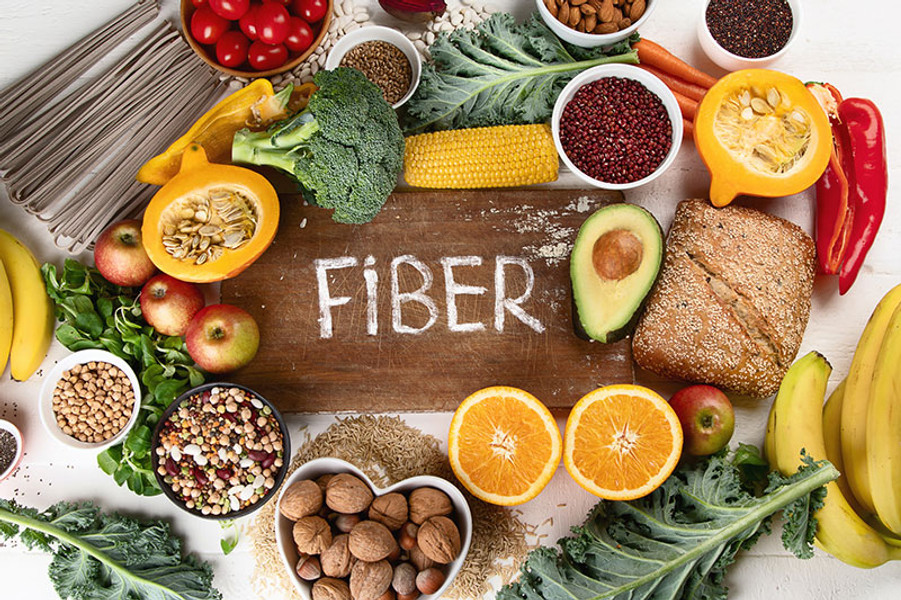Eat More, Weigh Less: High Fiber Foods Transform Your Diet
Posted by Fresh Harvest Market on 26th Jun 2024
High Fiber Foods You Should Include in Your Diet: A Comprehensive Guide with Nutritional Information
In the pursuit of a healthier and more balanced diet, high fiber foods often take center stage. Fiber is an essential component of our daily nutrition, with a wide range of health benefits. In this comprehensive article, we will explore the importance of fiber in your diet and provide a list of high fiber foods, along with their nutritional information, to help you make informed choices for better health.
The Role of Fiber in Your Diet
Fiber, often referred to as roughage, is a type of carbohydrate that the body cannot digest. It comes from plant-based foods and remains largely intact as it passes through the digestive system. There are two main types of dietary fiber: soluble and insoluble, both of which contribute to various aspects of health.
1. Digestive Health
Soluble fiber dissolves in water, forming a gel-like substance that can help prevent diarrhea and relieve symptoms of irritable bowel syndrome. Insoluble fiber, on the other hand, adds bulk to stool and aids in regular bowel movements, preventing constipation.
2. Weight Management
Fiber-rich foods are generally low in calories and provide a feeling of fullness, which can help control appetite and support weight loss efforts.
3. Blood Sugar Control
Soluble fiber can slow down the absorption of sugar, helping to regulate blood sugar levels and reduce the risk of type 2 diabetes.
4. Heart Health
A high-fiber diet can lower cholesterol levels and reduce the risk of heart disease. Soluble fiber binds to cholesterol molecules and eliminates them from the body.
5. Gut Microbiome
Fiber acts as a prebiotic, nourishing beneficial gut bacteria. A healthy gut microbiome is linked to various health benefits, including a stronger immune system and better mental health.
High Fiber Foods and Their Nutritional Information
Here is a list of some high fiber foods, along with their nutritional content, to help you incorporate them into your diet:
1. Legumes
- Black Beans: 1 cup cooked contains approximately 15 grams of fiber.
- Lentils: 1 cup cooked contains around 15 grams of fiber.
- Chickpeas: 1 cup cooked provides about 12.5 grams of fiber.
2. Whole Grains
- Quinoa: 1 cup cooked contains about 5 grams of fiber.
- Oats: 1 cup cooked oats offers roughly 4 grams of fiber.
- Brown Rice: 1 cup cooked provides around 3.5 grams of fiber.
3. Fruits
- Raspberries: 1 cup of raspberries offers a whopping 8 grams of fiber.
- Avocado: A medium-sized avocado contains approximately 9 grams of fiber.
- Pears: One medium pear provides about 5.5 grams of fiber.
4. Vegetables
- Artichokes: 1 medium artichoke contains around 10 grams of fiber.
- Broccoli: 1 cup of cooked broccoli provides roughly 5 grams of fiber.
- Sweet Potatoes: 1 medium sweet potato offers about 4 grams of fiber.
5. Nuts and Seeds
- Almonds: 1 ounce of almonds contains approximately 3.5 grams of fiber.
- Chia Seeds: 1 ounce of chia seeds offers roughly 10 grams of fiber.
6. Bran Cereals
- Bran Flakes: 1 cup of bran flakes contains around 7 grams of fiber.
- All-Bran: 1 cup of All-Bran cereal offers approximately 20 grams of fiber.
Incorporating High Fiber Foods into Your Diet
To enjoy the benefits of high fiber foods, aim to include a variety of these options in your daily meals. Consider adding legumes to your soups and salads, and snacking on nuts and seeds. Don't forget to consume a wide range of fruits and vegetables to ensure you're getting both soluble and insoluble fiber in your diet.
In conclusion, a diet rich in fiber is a cornerstone of good health. It aids in digestion, helps maintain a healthy weight, regulates blood sugar, and supports heart health. By incorporating a variety of high fiber foods into your daily meals, you can enjoy these health benefits and work towards a balanced and nutritious diet.

